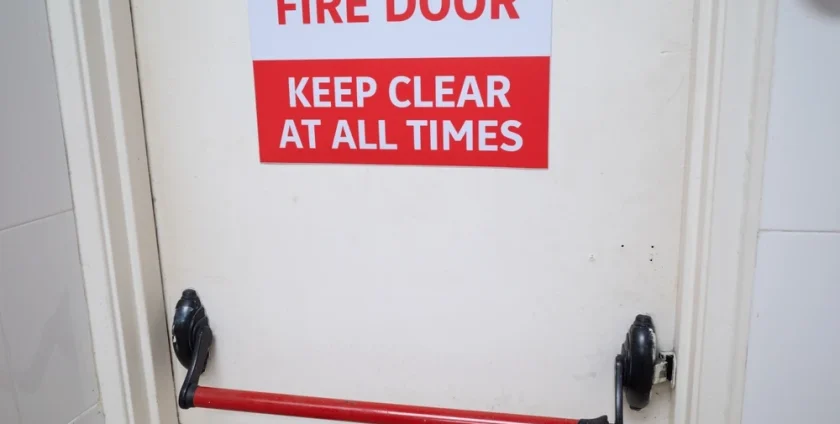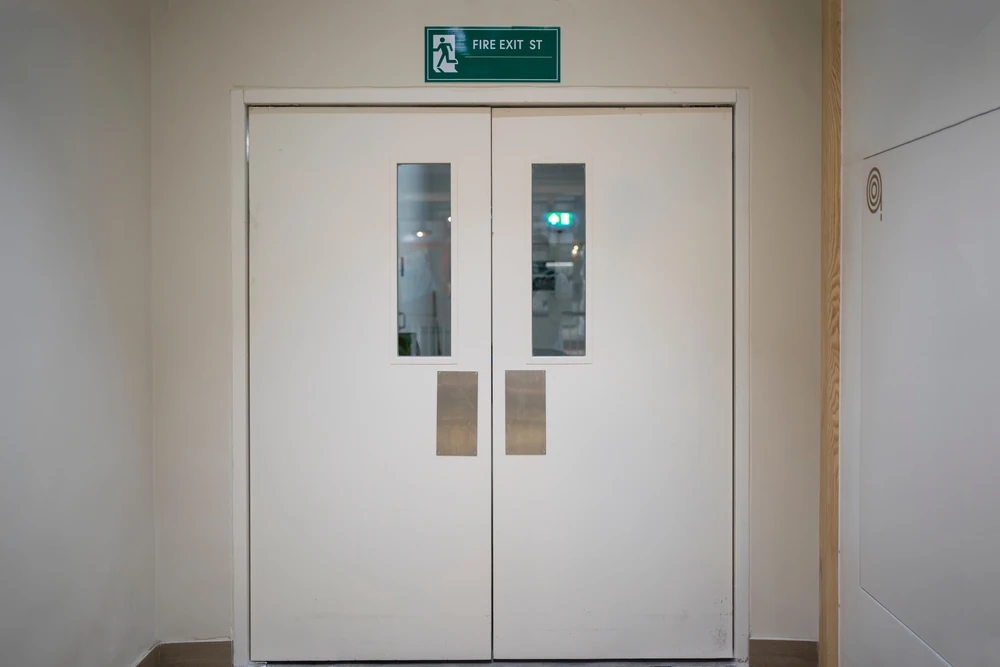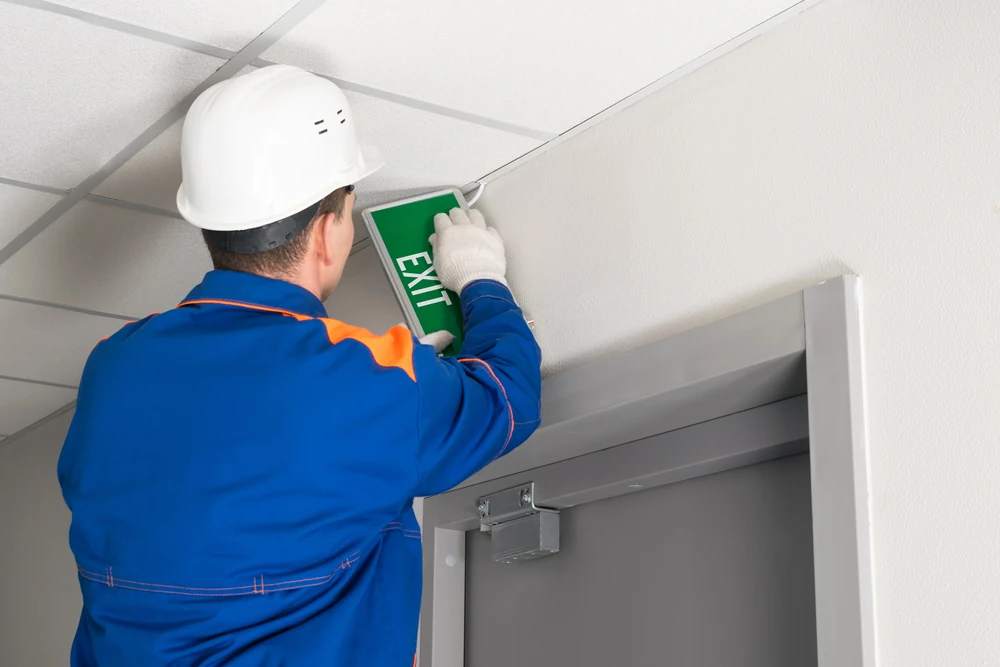
A fire-rated door is a specially constructed door designed to slow or prevent the spread of fire and smoke between different sections of a building. These doors are an essential component of passive fire protection systems and are commonly found in residential, commercial, and industrial buildings. Fire-rated doors are tested and certified to withstand fire for a specific period, typically ranging from 20 minutes to 3 hours, depending on their rating.
Fire-Rated Door Requirements
To ensure safety and compliance, fire-rated doors must meet several essential requirements:
- Fire Resistance Rating: Doors should have a designated rating, such as 30, 60, 90, or 120 minutes, to indicate their fire-resistance level.
- Self-Closing Mechanism: Fire doors must be equipped with a self-closing mechanism to ensure they remain closed in case of a fire.
- Smoke Seals: Intumescent strips or smoke seals prevent the passage of smoke, reducing smoke inhalation risks.
- Proper Latching System: Fire doors must have an automatic latching mechanism to keep them securely closed during a fire.
- UL-Listed Components: All hardware, including hinges, locks, and closers, must be UL-listed or certified for fire door applications.
Fire Door Regulations and Standards
Fire-rated doors must adhere to strict building codes and regulations to ensure maximum protection. The most common standards include:

- NFPA Fire Door Code (NFPA 80): Specifies installation, maintenance, and inspection requirements for fire doors.
- International Building Code (IBC): Establishes fire door standards in commercial and residential buildings.
- UL-Listed Fire Doors: Certified by Underwriters Laboratories (UL) to ensure they meet fire safety requirements.
- Local Fire Codes: Different countries and states may have specific fire door regulations that must be followed.
Fire-Resistant Door Materials
Fire-rated doors are constructed from various materials to provide fire resistance. Common materials include:
- Steel: Offers high durability and fire resistance, commonly used in industrial and commercial buildings.
- Wood with Fire-Resistant Core: Aesthetic and functional, often used in residential and office spaces.
- Glass: Fire-rated glass doors provide transparency while offering fire protection.
- Composite Materials: A combination of materials designed to enhance fire resistance while maintaining structural integrity.
Fire Door Installation Guidelines
Proper installation is crucial to ensure the effectiveness of fire-rated doors. Key installation guidelines include:
- Certified Installation: Only qualified professionals should install fire doors to meet regulatory standards.
- Correct Clearance: Ensure minimal gaps (typically 3mm) between the door and frame to prevent smoke passage.
- Sealing and Hardware: Use approved fire-resistant seals and UL-listed door hardware.
- Regular Maintenance: Conduct periodic inspections and repairs to maintain fire door integrity.

Commercial Fire Door Standards
Fire doors in commercial buildings must meet additional standards to protect occupants and assets:
- Minimum Fire Rating: Typically, commercial buildings require fire doors with at least a 60-minute rating.
- Emergency Exit Compliance: Fire doors should allow easy egress during emergencies while preventing unauthorized entry.
- Fire Door Safety Inspection: Regular inspections by certified professionals ensure compliance with NFPA 80 and local fire codes.
Residential Fire-Rated Doors
Fire-rated doors are not only for commercial use but also play a critical role in residential fire safety. Homeowners should consider installing fire doors in key areas such as:
- Garage to House Entry: Fire doors between garages and homes help prevent fire spread.
- Basements and Utility Rooms: Areas prone to fire hazards benefit from fire-rated doors.
- Apartment Units: Multi-family housing units often require fire-rated doors to meet building codes.
Understanding Fire Resistance Ratings
Fire resistance ratings indicate how long a door can withstand fire exposure. The most common ratings include:
- 20-Minute Fire Doors: Suitable for residential settings and smoke control applications.
- 45-Minute Fire Doors: Often used in stairwells and corridors.
- 60 to 90-Minute Fire Doors: Common in commercial and industrial applications.
- 120 to 180-Minute Fire Doors: Used in high-risk environments like chemical plants and warehouses.
Conclusion
Fire-rated doors are essential for fire safety in both residential and commercial buildings. Understanding fire door regulations, fire-resistant door materials, and proper installation guidelines ensures compliance and enhances fire protection. Regular inspections and maintenance help maintain the integrity of fire doors, ensuring they function effectively in case of an emergency. Whether for home or business use, investing in high-quality, UL-listed fire doors can save lives and prevent extensive property damage.
- By:Z3 Corporation
- 0 comment

Leave a Reply